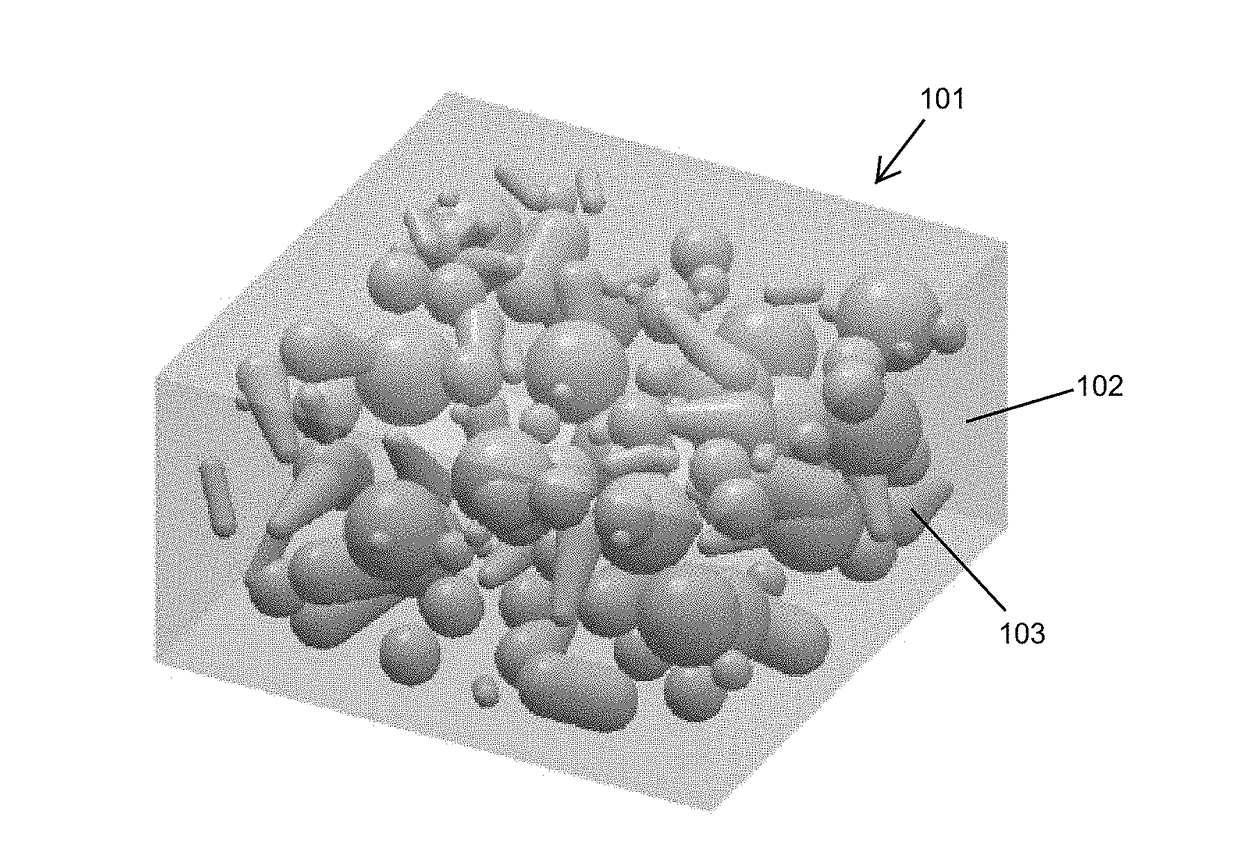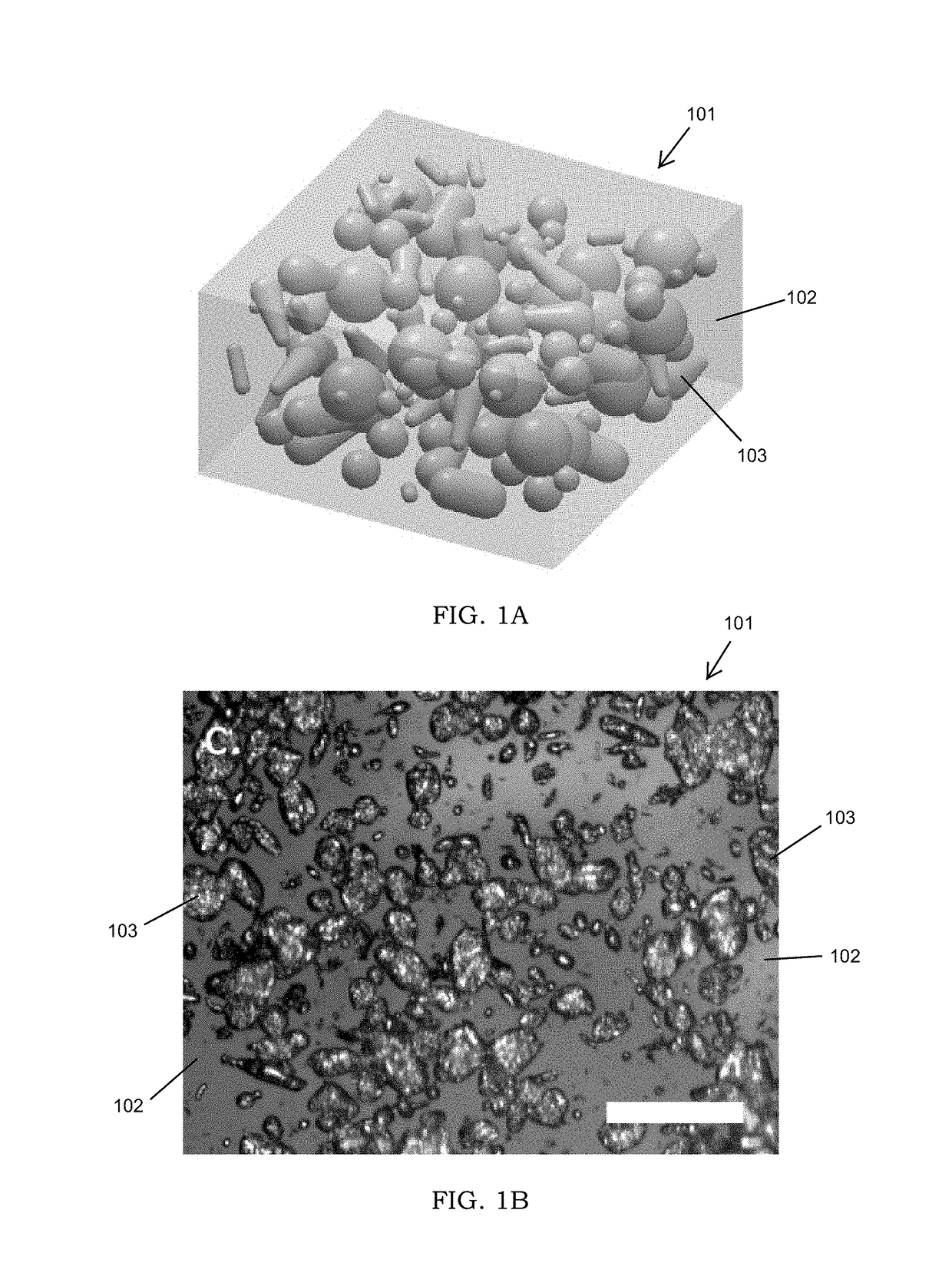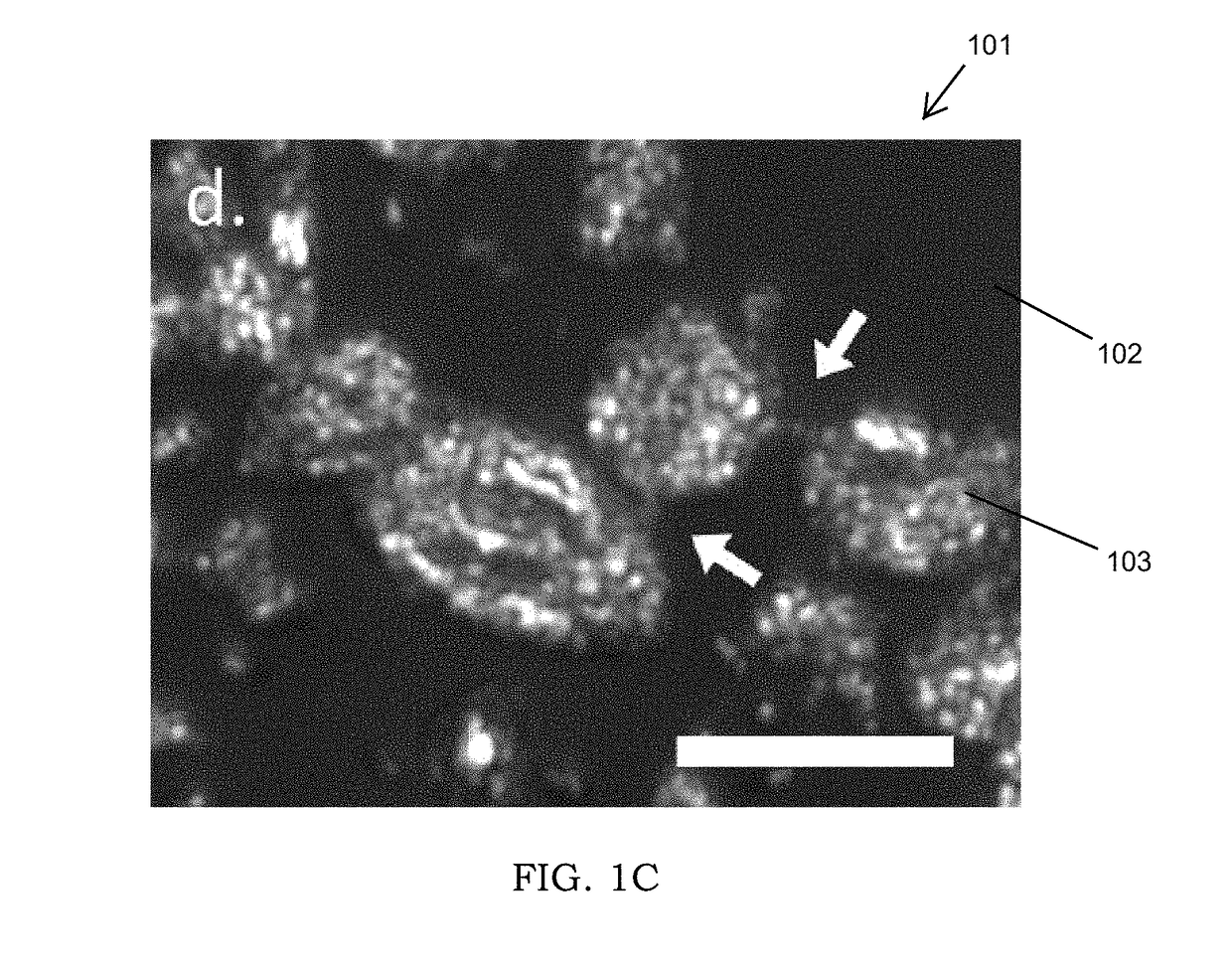Polymer Composite with Liquid Phase Metal Inclusions
a technology of liquid phase metal inclusions and polymer composites, which is applied in the field of polymer composites, can solve the problems of degrading the mechanical properties of soft and stretchable material systems, increasing mechanical stiffness and brittleness of materials, and poor volumetric conductivity of materials, and achieves enhanced electrical and thermal properties
- Summary
- Abstract
- Description
- Claims
- Application Information
AI Technical Summary
Benefits of technology
Problems solved by technology
Method used
Image
Examples
Embodiment Construction
[0022]According to one embodiment of the present invention is a composite 101 comprising an elastomer 102 embedded with a plurality of liquid metal inclusions 103. The elastomer 102 can include materials such as polysiloxane (e.g. ‘silicone’, polydimethylsiloxane, RTV silicones), polyurethane, polyacrylate, natural (latex) rubber, block copolymer elastomers (e.g. styrene ethylene butylene styrene), thermoplastic elastomers (e.g. propylene-ethylene co-polymer), and other similar materials. The liquid metal 103 can include materials such as eutectic gallium indium (EGaIn), gallium-indium-tin (Galinstan), Indalloy, NewMerc, mercury, and other metals that are liquid at lower temperatures than other metals.
[0023]In one example embodiment, the composite 101 comprises a thin sheet of poly(dimethylsiloxane) (PDMS) embedded with microscopic inclusions of liquid-phase gallium-indium-tin (“Galinstan”; electrical conductivity, o=3.46×106 S*m−1, melting point=−19° C.) droplets 103. (See to FIGS....
PUM
| Property | Measurement | Unit |
|---|---|---|
| diameter | aaaaa | aaaaa |
| elastic modulus | aaaaa | aaaaa |
| elastic modulus | aaaaa | aaaaa |
Abstract
Description
Claims
Application Information
 Login to View More
Login to View More - R&D
- Intellectual Property
- Life Sciences
- Materials
- Tech Scout
- Unparalleled Data Quality
- Higher Quality Content
- 60% Fewer Hallucinations
Browse by: Latest US Patents, China's latest patents, Technical Efficacy Thesaurus, Application Domain, Technology Topic, Popular Technical Reports.
© 2025 PatSnap. All rights reserved.Legal|Privacy policy|Modern Slavery Act Transparency Statement|Sitemap|About US| Contact US: help@patsnap.com



